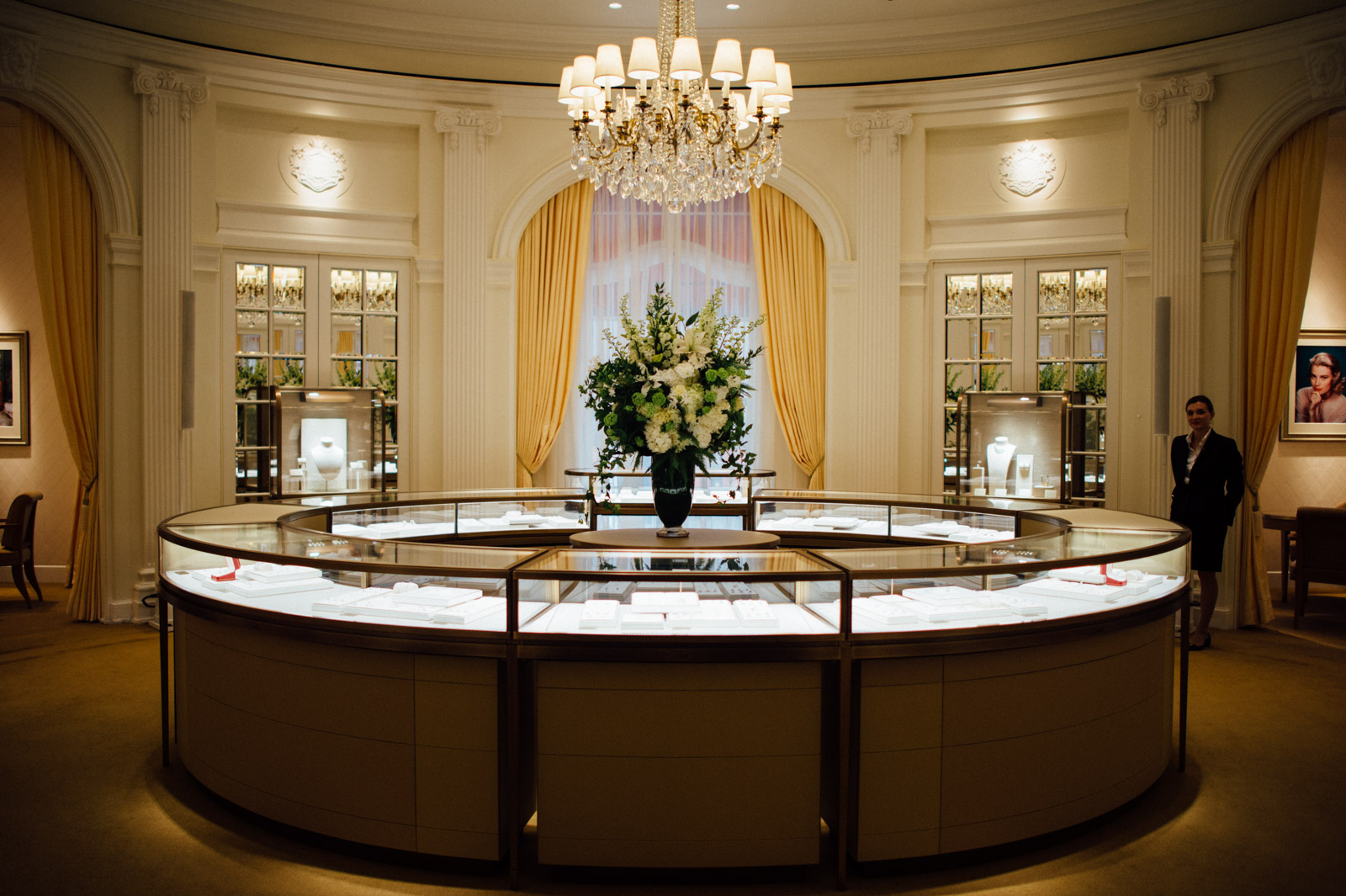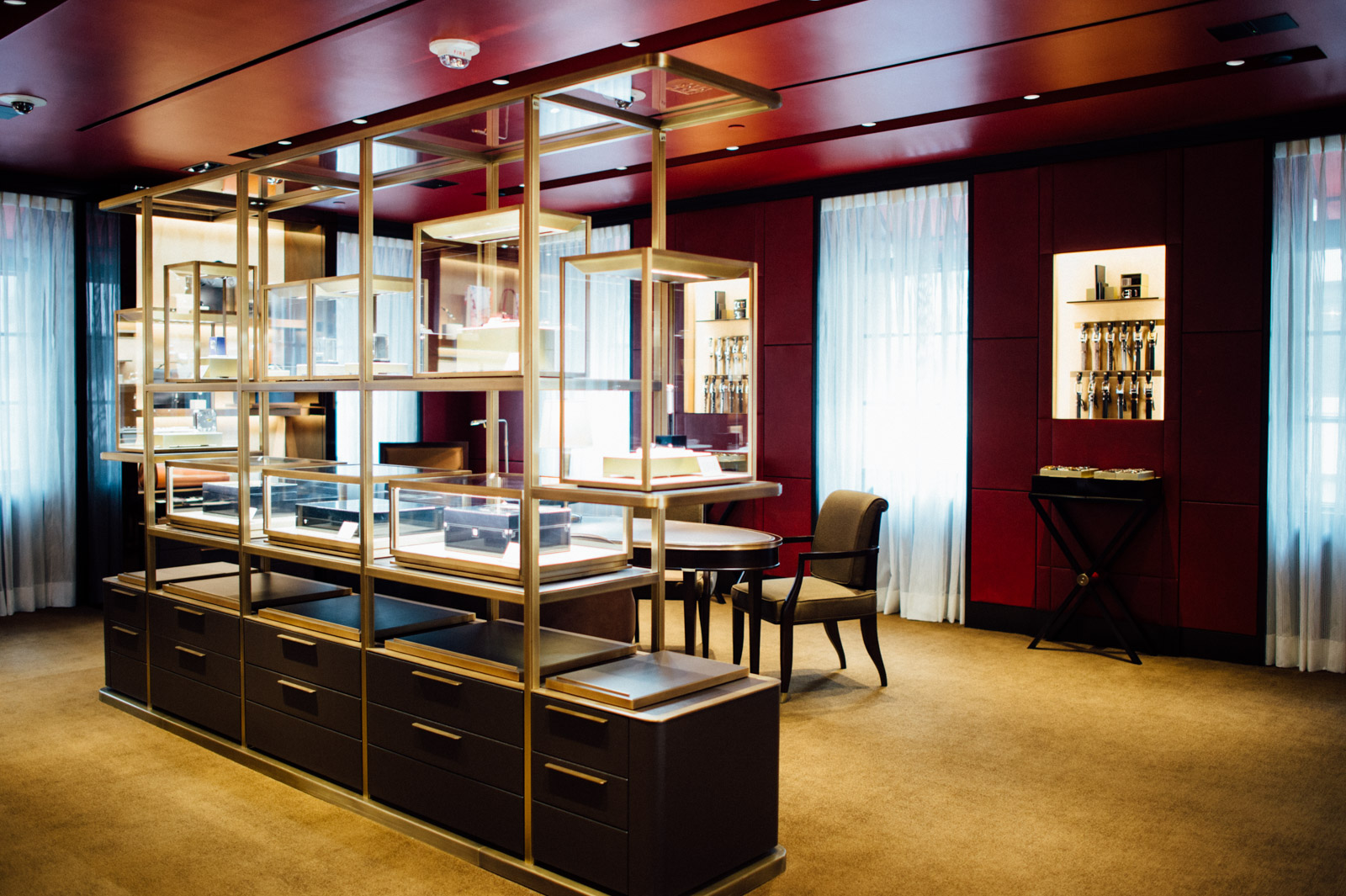The Cartier Mansion Redesigned
Thierry Despont partners with the iconic brand to reimagine the lofty Fifth Avenue space
An antique bronze clock rests atop the cornice of a central westward-facing window at the neo-Renaissance mansion on the corner of Fifth Avenue and 52nd Street. Pierre Cartier commissioned this timepiece from Brooklyn sculptor R Bonet in 1919. It’s been an important fixture of the Cartier Mansion since its delivery in 1921, declaring more than just the time. After a two-and-a-half-year overhaul spearheaded by architect and designer Thierry Despont—during which a grand stairwell was moved, walls were pulled down, and a second door was incorporated into a portion of the structure to reestablish central symmetry—the clock may seem like nothing more than a minuscule detail. But this relic, an original, stands for just about everything: the building’s near 100-year ownership by Cartier, their commitment to prestige watchmaking, the hiatus for redevelopment, and the way heritage plays a role in modernity. It’s all there.

Within the mansion, adding luster to history factors heavily into Despont’s work—from incorporating a century’s worth of famous clientele down to the purchasing of antique furniture for private salons. “Cartier Mansion is a house and good houses are about dreams and memories,” Despont explains to CH. “The house is infused with memories—memories of Pierre Cartier and memories of the iconic clients like Grace Kelly, Elizabeth Taylor, Gary Cooper, Gloria Swanson, Doris Duke and Maria Felix that were a habitué of this house. Those memories combined with beautiful spaces glowing with light and rich materials combine to make the spaces new, vibrant and harmonious.” Despont’s work conveys both intimacy and grandeur at once.

An important nod to the mansion as a former home lies within the portrait of Maisie Plant, the second wife of former owner Morton F Plant. Pierre Cartier purchased the mansion from Plant, in exchange for $100 and a Cartier pearl necklace for Maisie. At the time, the necklace was valued at almost one million dollars. In today’s prices, that would be $16 million. Beneath the portrait sits a sculpture of two panthers. The wild animal has become a symbol for the brand, and the panther motif appears elsewhere, as do many other Cartier signatures representational of the shift from home to retail space.

One floor up, the Princess Grace of Monaco salon demonstrates the sheer magnificence of the venue. The round room features private offshoot salons, and the motif above each door is either the original or an exact replica. Some 60% of the art within the space hails from archives in the Cartier palace in France—some from recently rediscovered boxes, according to Cartier’s heritage department. But display cases dominate one’s line of sight. “Obviously, the art of display and lighting is essential to a successful installation such as is Cartier,” says Despont. “Their products are truly museum pieces and we drew upon our experience from the our design of the J. Paul Getty Museum Galleries to show those pieces in a museum-like setting.”

Rising a floor higher, one finds the Gary Cooper salon dedicated to luxury watchmaking. There’s a balanced organization and warmth to the room, again with ample space for privacy when considering a purchase. The wall art was gifted by Cooper’s daughter Maria and focuses on the actor’s relationship with his Tank watch. Of equal beauty, however, are the displays featuring Cartier watches.
“We received a very detailed brief from Cartier as to what products they wanted to sell and how we had to design the vitrines,” Despont adds. “I always say that when playing tennis your game gets better when you play with a good partner and Cartier was a superb partner. They pushed us and we pushed them and our game got better.”

The adjacent Andy Warhol salon is anchored by a photograph of the artist sporting his iconic Tank watch. Warhol famously praised the brand, and always wore the watch but never wound it. During our initial visit, this salon was filled with archival material including pearl diving photos from Bahrain, which the nation’s government has declared a national treasure. The images were featured in a 1922 catalog, also on view in the room. While Warhol is the only pop artist present in the building, there are works from contemporary photographer Laziz Hamanito everywhere. Cartier hired Hamanito to document the building during construction and the three year’s worth of work exists in this room and many more.

A final floor open to the public contains the wing of accessories and perfumes. As for the perfume nook—featuring the brand’s latest release L’Envol—scented boxes deliver olfactory stimulation but moreover, when each is lifted a screen activates behind it for a corresponding visual presentation. It’s a strikingly modern feature in a mansion that more frequently honors the past.

Originally, only the first two floors of the Cartier Mansion were retail space. The rest were administrative spaces. Despont brought balance to it all, uniting floors and adding a luxuriant levity. “Truly, we completely reconfigured the interior of the Mansion as we wanted to give a great sense of spatial ordnance and sequencing where rooms flow from one to another through majestic enfilade and a new Grand Stair that rises through the Mansion inviting you to go from one floor to another,” he says.
But there are two secrets. First, there is a rooftop, open to some—including those that celebrated the building’s re-opening this week. But just beneath, there is a jewelry workshop across the entire fifth floor. It will be active within a few months. Remarkably, this was the case upon the building’s initial opening back in 1917, where over 70 jewelers constructed everything for the floors below. The attention to detail through, however, leads us to believe there are many more secrets that we just haven’t picked up yet.
Images by Josh Rubin

























